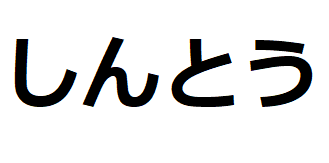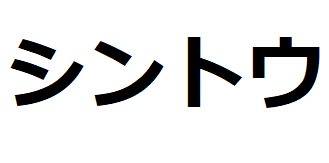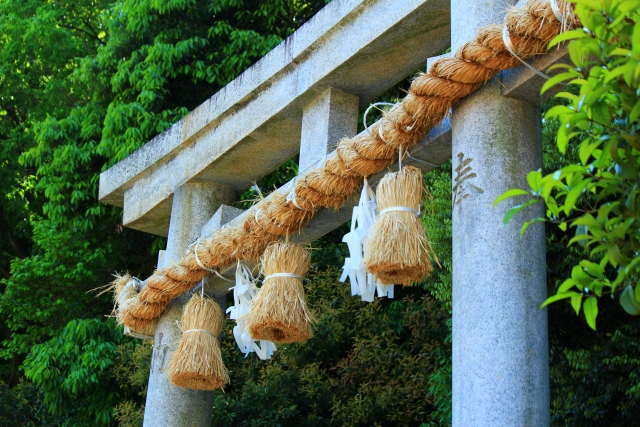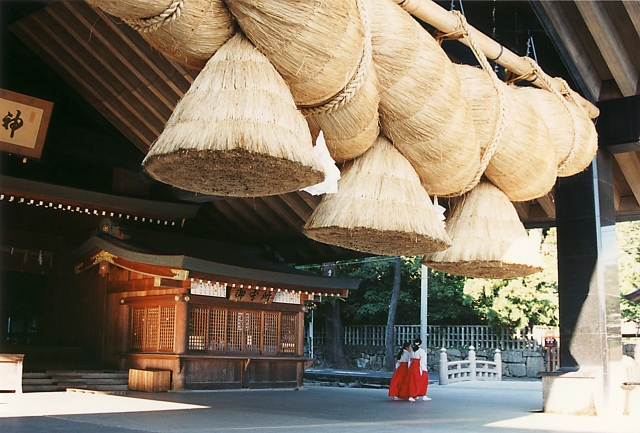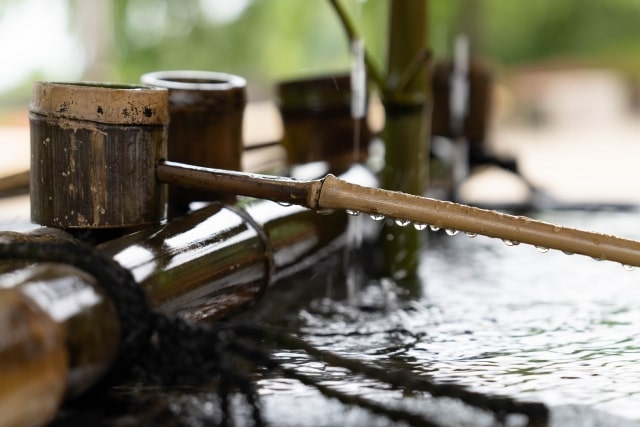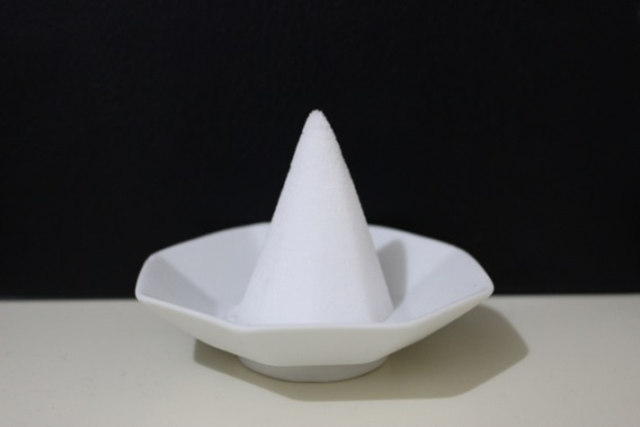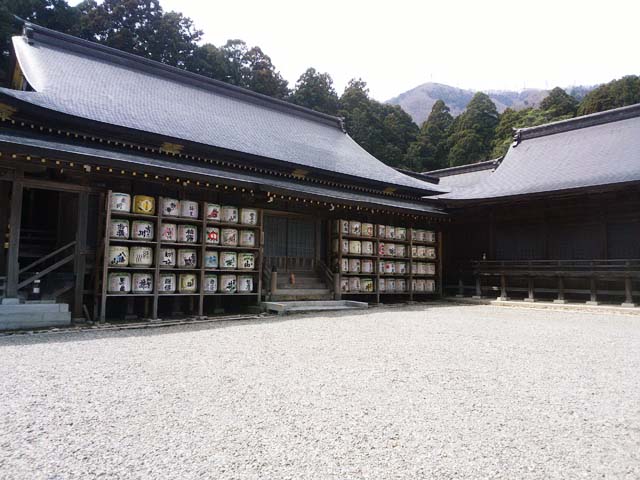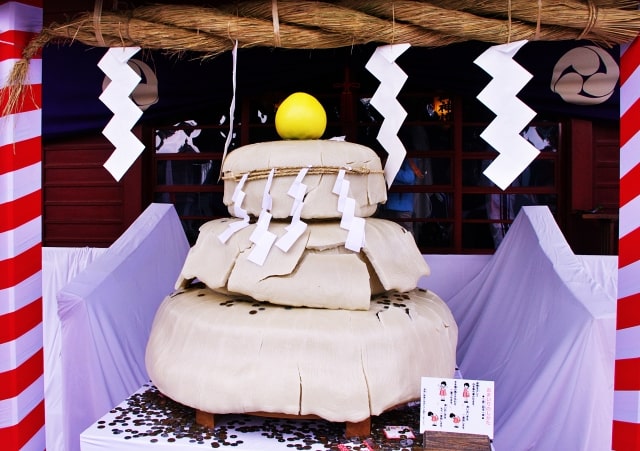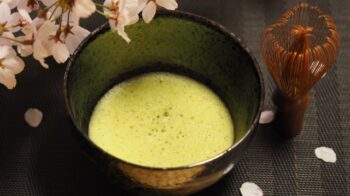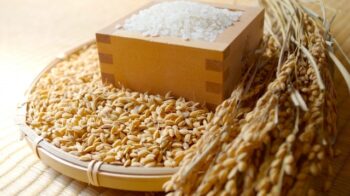Rice and Shinto
Welcome to the world of Rice and Shinto.
According to a Japanese legend which forms a platform of Shinto, the Sun Goddess (Amaterasu) sent her grandson (Ninigino-miya) from heaven to Japan. Sending off him, Amaterasu gave rice ears (Ina-ho) and ordered to govern Japan by nourishing the people living there.
Partly because of this story, rice has been considered as a sacred plant and played an important role in Shinto since ancient times.
Incidentally, the oldest Japanese chronicle tells us that this Ninigino-miya is the great grandfather of the first emperor Jinmu.
Let’s look into its story.
Below is the contents of this page.
1. Shinto
Although Shinto is widely accepted as the indigenous religion in Japan, it is a bit too ambiguous to be called a religion.
Little is known about its origin and Shinto remains mysterious even for Japanese.
They say that Shinto gradually emerged at the dawn of Japanese history and crystallized itself as a system of imperial religion maybe around the 5th century.
Therefore, it has neither a specific founder nor any sacred Scripture.
According to Shinto, gods live in everything in nature and bless us with good harvests.
As a result, everything in nature could become gods.
Furthermore, even personages that accomplished great feats, such as Tokugawa Ieyasu or Togo Heihachiro, could become gods after their death to protect the areas related to them.
– Shinto and Purification
What is most notable in Shinto is its emphasis on purification.
It encourages us to purify ourselves through some methods.
1) water
In front of the main shrine of Shinto, we find a water basin to wash our hands and rinse our mouth.
Washing hands with water represents purification from the dirt of everyday life.
Incidentally, we could observe the same custom in tea ceremonies.
How to use water basin
- Take a ladle and fill it with water.
- Pour water on your left hand and then, right hand
- Make a scoop with your left hand and pour water in it
- Rinse your mouth with this water (but, don’t drink it)
- Pour water again on your left hand
- Tilt the ladle to make the rest of water flow through the handle (this is done to purify the handle)
2) salt
Salt is also closely related with the thought of purification.
We’ve believed that it has a special power to purify things by driving away evil spirits.
That is why Sumo wrestlers throw salt in the ring before each bout.
3) Sake
We’ve believed that Sake could please gods and purify everything.
That is why Shinto priest sprinkles Sake in Shinto ceremony.
2. Sake and Shinto
Made from rice, Sake is closely related to Shinto.
Coupled with the trance effect it brings, we have believed that Sake has something spiritual in it.
In festivals, priests make rites to dedicate Sake to gods.
After these rites, people gathering there share the Sake, believing there stays blessings from gods.
Furthermore, in the wedding ceremony of Shinto style, the bride and groom drink three times from three cups (nine times in total), believing Sake will confirm their spiritual bond.
In addition, in the precinct of Shinto shrine, we can often find Sake barrels which are all donations from breweries.
It’s a great honour for them to dedicate their Sake to Shinto gods.
3. Rice cake and Shinto
Next, a rice cake called Mochi.
Made from sticky rice, Mochi is also closely related to Shinto.
Among the customs to offer something to gods, what has been kept faithfully until today is the custom of Kagami-mochi to celebrate New year.
Kagami means mirror.
Since ancient times, mirror has been considered as an object of worship which represents the Sun Goddess Amaterasu. Because it reflects the light and shines as the Sun itself.
Therefore, it was quite natural that people began to make mirrors with Mochi at New Year and dedicate it to gods, especially to Amaterasu herself.
On January 11, we eat the Kagami-mochi as a sacred leftover, believing that mochi would bring the spiritual power to us.
By the way, the Tale of Genji, a novel written at the beginning of the 11th century, is the first record of Kagami mochi being eaten at New Year.
4. Rice straw and Shinto
Lastly, Shime-nawa.
It’s a large rope made of rice straw.
According to the Shinto teaching, Shime-nawa separates the sacred domain from the terrestrial world and drives away evil spirits.
Incidentally, you can also find it in Sumo stadium.
– Izumo Shrine
Izumo shrine located in the Shimane prefecture is famous for its huge Shime-nawa.
Surprisingly, it measures 6.5 meters and weighs 1 ton.
In addition, in the Kagura-den where they dedicate music and dance to the gods, you can find a larger Shime-nawa measuring 13.5 meters and weighs 4.4 tons.
By the way, to make Shime-nawa, they usually twist the rope from right (the lower side) to left (the upper side).
However, in Izumo Shrine, the manner is totally reversed. That is to say, from left to right.
Because in Izumo Shrine, the right is the upper side.
Please keep it in mind that right and left indicate from the main temple side, not from the worshiper side.
5. Kanji and Kana
1) Kanji
To learn Kanji (Chinese characters) is always interesting and beneficial to understand what the word means.
Through Kanji, we can virtually grasp not only the meaning of the word, but also the background it was born in.
Kanji for Shinto is 神道.
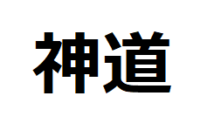
Firstly, 神(kami).
神 means god. The same Kanji is used for the God of both monotheism and polytheism.
Next, 道.
道 means road, street or way. Actually, we love to add the word “道 dou/way” at the end of some practices and extract something mental or spiritual.
For example,
2) Kana
By the way, there are two phonograms (kana) in Japanese: 1) Hiragana and 2) Katakana.
According to the most supported theory, both of them were formed by adopting one element of a Kanji character with similar sounding.
Originally, Hiragana were only for women. But today, it has by far the wider usage.
Talking of 2) Katakana, we use it mainly for foreign origin words.
Incidentally, there are 46 characters in both Hiragana and Katakana systems.
As for Shinto, Hiragana is しんとう and Katakana is シントウ.
